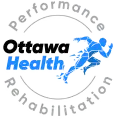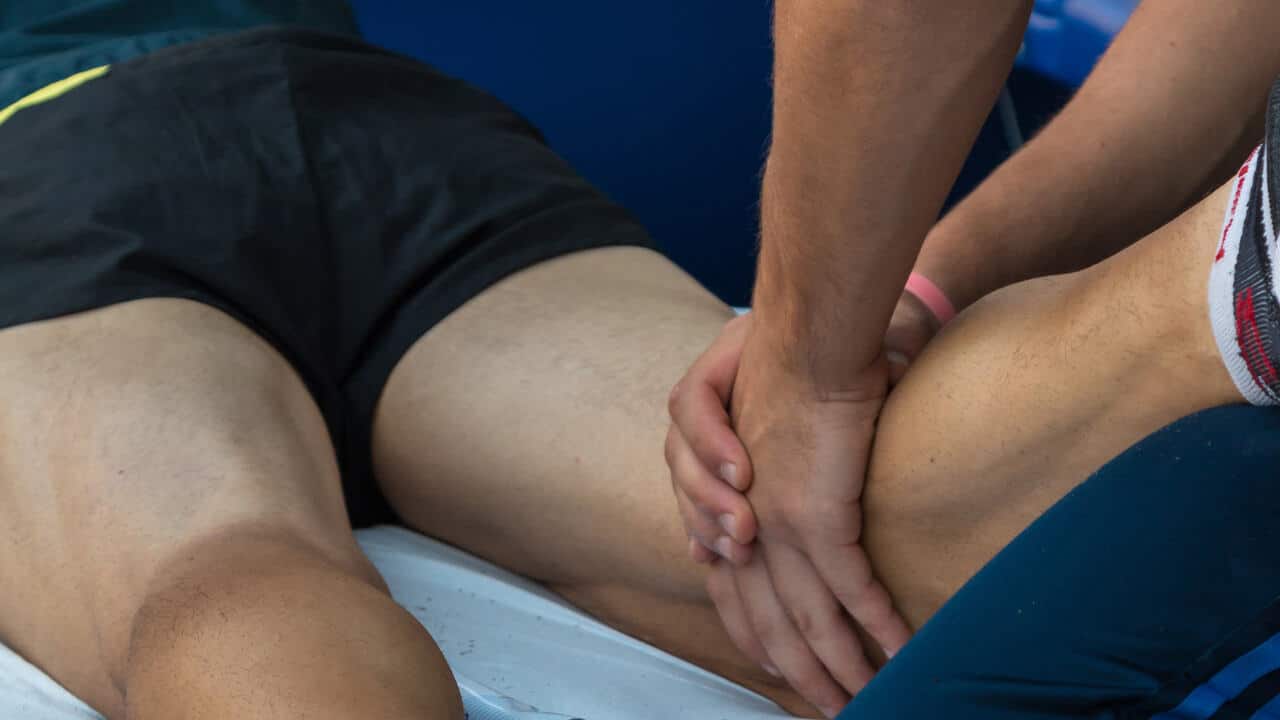Introduction to Sports Physiotherapy
What is Sports Physiotherapy?
Sports physiotherapy is a specialized branch of physical therapy focused on the prevention, assessment, and treatment of sports-related injuries. This practice is dedicated to helping athletes of all levels, from amateur to professional, to recover from injuries and to optimize their physical performance. Our aim is to provide tailored treatment plans that address the specific needs of each athlete, ensuring a comprehensive approach to rehabilitation and performance enhancement.
Sports physiotherapists use various techniques, such as manual therapy, exercise programs, and education, to assist athletes in their recovery journey. These professionals possess extensive knowledge of sports dynamics, making them uniquely qualified to address the complex needs of active individuals. For a deeper understanding of what sports physiotherapy entails, you can read more about physiotherapy for sports injuries.
The Importance of Sports Physiotherapy in Recovery
Sports physiotherapy plays a pivotal role in the recovery process by offering targeted interventions that are designed to accelerate healing and restore function. This specialized care ensures that athletes can return to their sport as safely and quickly as possible, minimizing the risk of re-injury.
Key benefits of sports physiotherapy in recovery include:
- Personalized Treatment Plans: Each athlete receives a customized plan that addresses their specific injury and individual needs.
- Injury Prevention: Techniques and exercises designed to strengthen vulnerable areas and prevent future injuries are incorporated.
- Pain Management: Effective strategies to manage pain and inflammation are implemented.
- Enhanced Performance: Rehabilitation focuses not only on recovery but also on improving overall athletic performance.
Here is a summary of some common injuries treated in sports physiotherapy:
| Injury Type | Common Treatment Techniques |
|---|---|
| Sprains and Strains | Manual Therapy, Strengthening Exercises, Stretching |
| Tendonitis | Ultrasound Therapy, Rest, Gradual Loading |
| Ligament Injuries | Bracing, Proprioceptive Training, Functional Exercises |
| Overuse Injuries | Load Management, Cross-Training Recommendations, Technique Modification |
By working closely with a specialized sports physiotherapist, athletes can ensure that their recovery is well-guided and monitored, significantly improving their chances for a successful return to sports. For more insights on how sports physiotherapy can aid in your recovery, explore our articles on physiotherapy for knee pain, physiotherapy for shoulder pain, and physiotherapy for rotator cuff injuries.
Common Injuries Treated
In sports physiotherapy, we focus on diagnosing, treating, and preventing sports-related injuries. Our goal is to help athletes and active individuals return to their peak performance levels while minimizing the risk of future injuries.
Sports-Related Injuries Addressed
Sports physiotherapy addresses a wide range of injuries commonly experienced by athletes. These include:
- Sprains and Strains: Injuries to ligaments (sprains) and muscles or tendons (strains).
- Tendinitis: Inflammation of the tendons, often seen in conditions like tennis elbow and Achilles tendonitis.
- Joint Injuries: Common in the shoulders, knees, and ankles, such as rotator cuff injuries and ACL tears.
- Fractures: Broken bones that require careful rehabilitation to regain strength and mobility.
- Back Pain: Including conditions like sciatica and herniated discs.
- Overuse Injuries: Like shin splints and plantar fasciitis.
Rehabilitation Techniques Used
Our sports physiotherapy clinic employs a variety of rehabilitation techniques tailored to each individual’s specific injury and needs. These techniques include:
- Manual Therapy: Hands-on techniques to manipulate muscles and joints, improving mobility and reducing pain.
- Exercise Programs: Customized physiotherapy exercises designed to strengthen muscles, improve flexibility, and restore function.
- Electrotherapy: Use of electrical impulses to reduce pain and stimulate muscle healing.
- Ultrasound Therapy: Utilizes sound waves to promote tissue repair and reduce inflammation.
- Taping and Bracing: Provides support and stability to injured areas, allowing for safe movement during recovery.
- Education and Prevention: Teaching proper techniques and providing injury prevention strategies to avoid future injuries.
Here is a table summarizing some of the common injuries and corresponding rehabilitation techniques:
| Injury Type | Rehabilitation Technique |
|---|---|
| Sprains and Strains | Manual Therapy, Taping and Bracing |
| Tendinitis | Ultrasound Therapy, Exercise Programs |
| Joint Injuries | Manual Therapy, Electrotherapy |
| Fractures | Exercise Programs, Taping and Bracing |
| Back Pain | Manual Therapy, Electrotherapy |
| Overuse Injuries | Ultrasound Therapy, Education and Prevention |
If you’re seeking help for sports-related injuries, consider visiting our physiotherapy clinic to explore tailored treatment plans. For those new to physiotherapy, our comprehensive guide on what to expect during a sports physiotherapy session can be a valuable resource.
Benefits of Sports Physiotherapy
Sports physiotherapy plays a crucial role in enhancing athletic performance and ensuring a speedy and effective recovery from injuries. It also emphasizes preventing injuries before they occur. Let’s explore these benefits in detail.
Improved Performance and Recovery
Sports physiotherapy focuses on both immediate recovery and long-term athletic improvement. By working on tailored treatment plans and hands-on therapy, we help athletes regain their strength, flexibility, and overall performance.
| Aspect of Performance | Physiotherapy Impact |
|---|---|
| Speed | Increased through muscle strengthening and flexibility exercises |
| Endurance | Enhanced by personalized cardiovascular conditioning |
| Strength | Improved with targeted strength training and rehabilitation |
| Flexibility | Increased via stretching routines and mobility work |
Our specialized treatment ensures that the muscles and joints are in optimal condition, minimizing downtime and accelerating recovery. For more information on tailored plans, refer to our article on physiotherapy treatment.
Injury Prevention Strategies
Preventive measures are a cornerstone of sports physiotherapy. By identifying potential issues before they lead to injury, we help athletes stay at the top of their game.
Common Prevention Strategies:
- Biomechanical Analysis: Examining the athlete’s movement patterns to spot and correct flaws.
- Strengthening Exercises: Custom exercises aimed at fortifying weak areas prone to injury.
- Flexibility and Stretching: Essential routines to maintain muscle elasticity and joint mobility.
- Education and Awareness: Teaching proper techniques and habits to avoid recurrent injuries.
These strategies contribute significantly to reducing the risk of sports-related injuries. Whether dealing with common conditions like physiotherapy for knee pain or specific issues like physiotherapy for rotator cuff injuries, our approach ensures athletes remain injury-free and perform at their best.
Integrating these benefits into regular training regimens makes sports physiotherapy an invaluable asset for anyone serious about their athletic pursuits. For a deeper dive into how these benefits are applied, see our guide on physiotherapy for sports injuries.
What to Expect During a Sports Physiotherapy Session
When we embark on a sports physiotherapy session, understanding the process can help us feel more comfortable and prepared. Here’s a detailed look at what to expect during these sessions.
Initial Assessment
The first step in any sports physiotherapy session is the initial assessment. During this phase, the physiotherapist will evaluate our physical condition, medical history, and specific injury or pain areas. This helps in tailoring the treatment to our individual needs.
| Assessment Component | Description |
|---|---|
| Medical History | Discuss previous injuries, surgeries, and current medication. |
| Physical Examination | Includes range of motion tests, strength evaluations, and palpation. |
| Diagnostic Tools | May use X-rays or MRIs if necessary. |
Feel free to explore more about what to expect in a physiotherapy clinic.
Tailored Treatment Plans
After the initial assessment, the physiotherapist will develop a personalized treatment plan. This is designed to address our specific injuries and goals.
| Treatment Plan Elements | Description |
|---|---|
| Short-Term Goals | Pain management and reduction. |
| Long-Term Goals | Full recovery, increased strength, and flexibility. |
| Specific Techniques | Might include physiotherapy exercises, manual therapy, and electrotherapy. |
A tailored treatment plan is essential for effective physiotherapy treatment.
Hands-On Therapy and Exercise Programs
Hands-on therapy, combined with specific exercise programs, plays a crucial role in sports physiotherapy. This approach helps us recover and prevent further injuries.
Hands-On Therapy
Manual therapy involves hands-on techniques to manipulate muscles and joints. This can alleviate pain and improve mobility.
| Manual Therapy Techniques | Benefits |
|---|---|
| Soft Tissue Mobilization | Relieves muscle tension and facilitates blood flow. |
| Joint Mobilizations | Increases joint movement and range of motion. |
| Myofascial Release | Releases tightness in the connective tissue around muscles. |
Exercise Programs
Exercise programs are tailored to our needs and help build strength, endurance, and flexibility.
| Exercise Type | Purpose |
|---|---|
| Strength Training | Builds muscle to support injured areas. |
| Flexibility Exercises | Improves range of motion and reduces stiffness. |
| Endurance Training | Enhances overall fitness and injury resilience. |
To understand more about specific conditions treated, refer to physiotherapy for sports injuries.
Understanding what to expect during a sports physiotherapy session can make the process smoother and more effective. By knowing the steps involved, we can better prepare and actively participate in our healing journey.
Working with a Sports Physiotherapist
Importance of Communication
Effective communication is essential when working with a sports physiotherapist. Clear and open dialogue allows us to understand our ailments better, establish realistic expectations, and actively participate in our treatment plan. A sports physiotherapist will ask about the symptoms, the history of the injury, and any previous treatments to get a detailed understanding. It’s important to communicate any pain, discomfort, or progress observed during the sessions to allow for necessary adjustments. For more on the initial steps, see our section on physiotherapy treatment.
Setting Realistic Goals
Setting realistic goals is crucial in sports physiotherapy. These goals help us stay motivated and measure progress effectively. A sports physiotherapist will work with us to set short-term and long-term objectives tailored to our specific needs and abilities. Whether it’s regaining full mobility, reducing pain, or preparing for a return to sports, having clear goals ensures that the treatment plan is focused and structured. For guidance on exercises that support these goals, visit our page on physiotherapy exercises.
| Goal Type | Example | Time Frame |
|---|---|---|
| Short-Term | Reduce swelling | 1-2 weeks |
| Medium-Term | Improve range of motion | 4-6 weeks |
| Long-Term | Return to sports activities | 3-6 months |
Building a Trusting Relationship
Building a trusting relationship with the sports physiotherapist is essential for effective treatment. Trust fosters a positive environment where we feel comfortable discussing concerns and following the prescribed treatment plans. A trustworthy physiotherapist will explain the rationale behind each technique, provide updates on progress, and reassure us throughout the recovery journey. Regular follow-ups and consistent feedback enhance this relationship, making the rehabilitation process smoother.
The trusting relationship is further solidified through personalized care and attention to how we respond to treatment. For more insight into what constitutes a good partnership with a physiotherapist, read our article on physiotherapy clinic.
Working closely with a sports physiotherapist, maintaining open communication, setting achievable goals, and building a trusting relationship can significantly enhance our recovery and performance, helping us return to our favorite activities stronger and more resilient.




